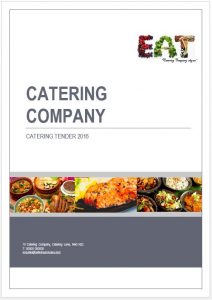Article Details
Writing a tender submission can often be a long and arduous process, but some contracts give you the chance to develop a submission which is truly striking. It is important to recognise the full potential of a bid or tender invitation. Some can be open-ended, and give you the opportunity to really show off what your company can do.
 By using formatting techniques, diagrams and illustrations, you can complement your responses and support your claims. This is often impossible when you have to use text boxes on a portal to upload your responses, but hard copy submissions or Word/pdf attachments on a portal provide a unique opportunity to get creative with your bid.
By using formatting techniques, diagrams and illustrations, you can complement your responses and support your claims. This is often impossible when you have to use text boxes on a portal to upload your responses, but hard copy submissions or Word/pdf attachments on a portal provide a unique opportunity to get creative with your bid.
When writing a bid you may not typically choose to add pictures or different font styles, in case the bid is perceived as unprofessional. However, an attractive submission can often catch the evaluator’s eye, encouraging them to look at the tender in more detail. Some possibilities you can think about include the use of headers and footers to display your company logo, slogan and contact details. You can also consider using different text styles to display testimonials throughout the submission.
Using visual aids such as diagrams or charts helps to convey information clearly. As an example, a simple organisational chart can effectively demonstrate the structure of your business at a glance. When supplemented by a short description on why your organisation is established this way, an organisational chart can be an excellent addition to your bid.
Important things to remember when getting creative with bids and tenders are:
- Get the tone right — the tone of your bid submission is highly dependent on the industry you are writing for. For example, if you deliver a catering service, images of food along with bright, vibrant colours could be used to demonstrate a variety of tastes and flavours. This would not work as well for sectors such as health and social care.
- Know your audience — some tenders have the scope to be more sales orientated, and may benefit from flashy pictures and extravagant vocabulary. However, this would not be appropriate for tenders completed for the construction or engineering industries. In this case, elaborate language may come across as unnecessary jargon. Evaluators in these industries often prefer bids which get to the point quickly.
- Keep it simple — although it is important for a tender to be beautifully presented, putting in unnecessary images can overcomplicate the submission, and draw attention away from the actual content. Keep it simple with a few clear diagrams or illustrations, to ensure the information provided is both relevant and informative.
- Be consistent — by using multiple fonts and conflicting colour schemes, you risk confusing your evaluator. If the font type or size changes throughout the submission this does not put across the image of an efficient and well-organised organisation. It is therefore important to be consistent with the colours, font, formatting and language you use throughout the submission so that you create a winning tender.
Being innovative with your responses, and experimenting with different fonts, images and formatting techniques can make your submission stand out. However, flamboyant language and meaningless pictures will only serve to distract the evaluator from the content of the bid. Ultimately, it is important that you reach a balance between creativity and professionalism when writing bids and tenders.